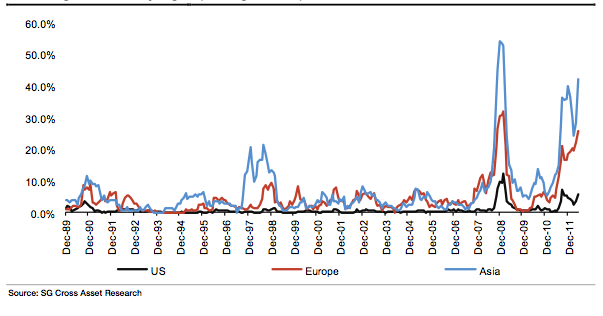It may have skipped most people's attention, but stock markets are looking cheap. Notable hedge fund manager Joel Greenblatt was this week quoted as saying that the market has only been cheaper 13% of the time over the last 23 years. Historically at such extremes of valuation the average 12 month upside in stocks has been 17%, and over 2 years well over 30%. Given such statistics it's quite remarkable that the investing public is still throwing money at the ill perceived safety of cash and low yielding bonds. Sure, there's always risk in the stock market, but right now there may be more risks to the upside than the downside. Perhaps investors ought to be looking for ways to play stocks that offer great return possibilities while minimising business risk. It turns out there's a deep value formula that promises to do exactly that, concocted by the bargain master himself - Benjamin Graham.
Graham, for those that don't know, was Warren Buffett's tutor and one of the greatest value investors of all time. We've covered some of the mechanical ways which Graham used to find bargain stocks before in great detail, but alas some of his most famous bargain hunting techniques (such as the esoteric sounding net-net and ncav strategies) can be unsuitable for risk averse investors. The main critique is that these lists tend to be populated with a lot of small microcap stocks that many investors find those too small, too illiquid, too risky and too hard to trade.
Ben Graham's Last Will - a money making formula
But, towards the end of his life, Graham developed a much more flexible checklist based formula that allows investors to build portfolios of deep value stocks large or small. We have previously written about this ten point checklist that he developed with aeronautical engineer, James Rea, shortly before he died. It's become known as "Graham's Last Will" and was the result of 50 years of backtests to highlight the top ten best performing stock selection criteria.
The ten checks were split in two groups of five, the first five aiming to highlight 'cheap' stocks with strong return possibilities (using low PE, high yields, good asset backing etc), with the second five aiming to find 'low risk' stocks (not much debt, consistent profitability, good liquidity etc). A company gains points for passing each of the…









